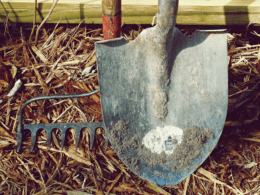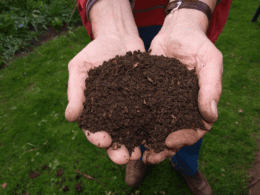Are you tired of planting bulbs only to have them grow weak and wither away? Don’t worry, you’re not alone. Many gardeners struggle with getting their bulbs to grow to their full potential. But fear not, with the right tips and techniques, you can ensure optimal growth for your bulbs and a stunning garden to enjoy.
In this article, we’ll provide you with the essential information you need to plant bulbs correctly and give them the best chance for optimal growth. From identification tips for popular flower bulbs to detailed instructions on how to plant them correctly, we’ve got you covered.
With our helpful guide, you’ll be able to avoid the common mistakes that hinder bulb growth and enjoy a garden full of vibrant, healthy blooms. So let’s get started and learn how to plant bulbs right for optimal growth!
Quick Takeaways
- Planting bulbs with the sprouting side up gives them the least stressful path to growth and results in optimal growth.
- Bulbs planted upside down can still grow but can result in a plant with less vigor and a fleeting bloom.
- The article provides identification tips for popular flower bulbs such as calla lily bulbs, liatris bulbs, gladioli bulbs, elephant ear bulbs, tulip bulbs, amaryllis bulbs, Dutch iris bulbs, caladium bulbs, dahlia bulbs, and cyclamen bulbs.
- Giving plants the best care right from the start will result in a rewarding and stunning garden.
Identification Tips
So, if you’re unsure of how to identify the tops and bottoms of popular flower bulbs, the article provides helpful tips for 10 garden favorites. Avoid common mistakes by checking the shape, color, and texture of the bulb to determine which side should face up. Troubleshooting techniques are also included for bulbs that are difficult to identify, such as caladium bulbs with hairy nodes and cyclamen bulbs with spiky tendrils.
For calla lily bulbs, plant with the bumpy points facing up. Liatris bulbs should be planted with the circular spot downward, as this is where the roots emerge. Gladioli bulbs should be planted with the point facing up, while elephant ear bulbs should be planted with the flat spot down.
Tulip bulbs should be planted with the point facing up or the roots facing down, and amaryllis bulbs should be planted with the greenish, cut section facing up. Dutch iris bulbs should be planted with the point facing up, and caladium bulbs should be planted with the nodes facing up.
Finally, dahlia bulbs should be planted with the roots down, and cyclamen bulbs should be planted with the spiky tendrils upward.
Popular Flower Bulbs
Identifying the tops and bottoms of popular flower bulbs can be tricky, but with these tips, you’ll be able to confidently plant your calla lily, gladioli, and amaryllis bulbs correctly. Here are some growing techniques that will help you with bulb maintenance:
-
Calla lily bulbs are usually wide and flat, with a smooth side and another section with lots of ‘eyes’ or bumpy points. Plant them with the bumpy points facing up.
-
Gladioli bulbs come to a point, with the opposite side having a round, slightly indented spot where the roots have fallen off. Plant them with the point facing up.
-
Amaryllis bulbs are large and round, with one end having a slightly green color and several layers of cut flesh in a compact oval shape. Plant them with the greenish, cut section facing up.
-
Dutch iris bulbs are small and oblong with a papery skin, with a definite pointy end and the opposite side featuring a small flat spot where roots develop. Plant them with the point facing up.
-
Cyclamen bulbs are round, wide, and flat, often with a smooth convex side and a side with lots of spiky tendrils coming from the center. Plant them with the spiky tendrils upward, as this is where new growth emerges. The smooth side goes down if root development isn’t evident.
Remember, planting bulbs correctly is essential for optimal growth. By following these identification tips, you’ll be able to give your bulbs the best chance to thrive.
Importance of Correct Planting
To ensure that your flower bulbs thrive and produce a stunning garden, you need to understand the importance of correctly positioning them during planting. Planting bulbs upside down can result in a plant with less vigor and a fleeting bloom. That’s why it’s crucial to plant them with the sprouting side up.
Giving your plants the best care right from the start will result in a rewarding and successful garden. By using proper planting techniques, you can ensure that your bulbs receive the least stressful path to growth and have the best chance for optimal growth. This will have a significant impact on the success of your garden.
Follow the instructions and identification tips provided for popular flower bulbs, and you’ll be well on your way to creating a beautiful garden that will bring joy and happiness for years to come.
Detailed Instructions
Now, let’s get started on the detailed instructions for correctly planting your flower bulbs. First, it’s essential to choose the right planting depth for each type of bulb. Planting too deep can cause the bulb to rot, while planting too shallow can cause it to dry out. As a general rule, bulbs should be planted at a depth of two to three times their own height.
Before planting, it’s also important to prepare the soil properly. Make sure the soil is loose and well-draining to prevent waterlogging, which can lead to bulb rot. Incorporate organic matter such as compost or peat moss to improve soil structure and fertility. Mix in a slow-release fertilizer to provide essential nutrients to the bulbs.
With these simple steps, you can ensure that your bulbs have the best chance for optimal growth and a stunning bloom.
Useful Resource
You can easily bookmark this article as a useful resource for future reference on how to correctly plant your flower bulbs for stunning blooms in your garden. As a gardener, it’s important to know the proper gardening techniques and planting strategies to ensure optimal growth for your plants. This article provides detailed instructions and identification tips for popular flower bulbs, helping you avoid the mistake of planting them upside down and resulting in a plant with less vigor and a fleeting bloom.
To make it easier for you to keep track of the different bulb types and their planting instructions, here’s a simple table that you can refer to:
| Flower Bulb | Identification Tips | Planting Instructions |
|---|---|---|
| Calla Lily | Bumpy points facing up | |
| Liatris | Circular spot downward | |
| Gladioli | Point facing up | |
| Elephant Ear | Flat spot down | |
| Tulip | Point facing up or roots facing down | |
| Amaryllis | Greenish, cut section facing up | |
| Dutch Iris | Point facing up | |
| Caladium | Nodes facing up | |
| Dahlia | Roots down | |
| Cyclamen | Spiky tendrils upward |
Bookmark this article and refer to this table whenever you need to plant bulbs in your garden. With the proper planting techniques, your flowers will have the best chance for optimal growth and stunning blooms. Happy gardening!
Frequently Asked Questions
What are some common mistakes people make when planting bulbs?
When planting bulbs, common mistakes include planting them too shallow or too deep, not preparing the soil properly, and not planting them with the sprouting side up. These mistakes can result in stunted growth and a weak plant.
How deep should bulbs be planted?
For optimal growth, plant bulbs at a depth of two to three times their size. Proper soil preparation is crucial for healthy growth. Ensure the soil is well-draining and amend it with organic matter. Plant Bulbs Right: Tips for Optimal Growth.
How often should bulbs be watered?
To maintain optimal soil moisture for bulb hydration, water bulbs deeply once a week. Adjust frequency based on weather conditions to find the right balance between drought tolerance and growth.
Are there any plants that should not be planted near bulbs?
Companion planting can help bulbs thrive, but some plants should be avoided. Bulb avoiding plants include daffodils, fritillaries, and alliums, which release chemicals that can harm other plants. Plant bulbs away from these plants.
How can you tell if a bulb is still viable before planting it?
To test a bulb’s viability, store it in a cool, dry place for a few weeks, and then check for firmness and mold. Revive old bulbs by soaking them in water for a few hours before planting.








